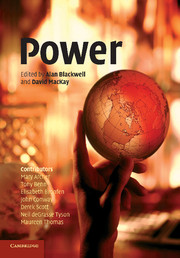6 - The power of music
Published online by Cambridge University Press: 07 August 2009
Summary
Perhaps the most popular perception of music's power is as a force acting upon or representing emotions such as love, hate, fear, joy and sadness. Because of its emotional impact, music also possesses a political power that can be exerted in the forging of national and social class identities. The British National Anthem offers a telling case study of such power. A subject frequently linked to politics is economics, and here again music exerts its might. The value of the music sector to the UK economy was an estimated £2.5 billion in 1995, according to a National Music Council Report (Eliff, Feist and Laing 1996: 5). Four record companies (BMG, Universal, Sony and Time-Warner) currently control over 80 per cent of the global record market. When the Spice Girls split up, the price of EMI shares fell immediately by 10 pence. Their recovery was helped by pop star Britney Spears. Alas, on 28 January 2002 EMI's shares fell again, this time slipping 14 pence after Deutsche Bank warned that the shareholders' dividend was likely to be halved. This was a consequence of the company's decision to pay one of its artists not to sing. The sales of Mariah Carey's latest album had been disappointing, but EMI were locked into a deal to fund several more of her albums, so offered her instead a pay-off of £19.6 million. Major record companies are dealing with stars whose financial value is greater than the gross domestic product of some small countries.
- Type
- Chapter
- Information
- Power , pp. 94 - 113Publisher: Cambridge University PressPrint publication year: 2006



